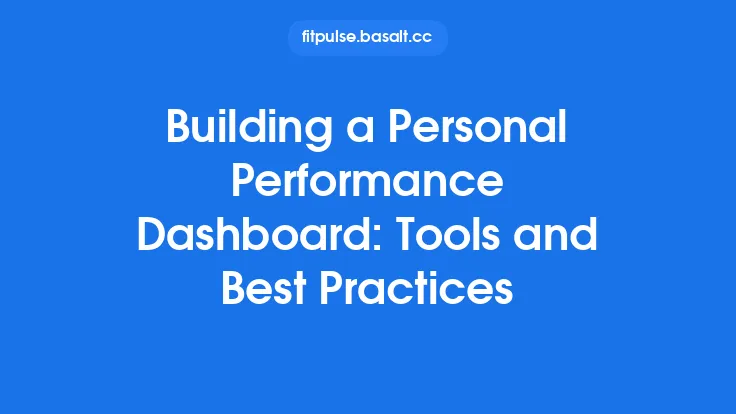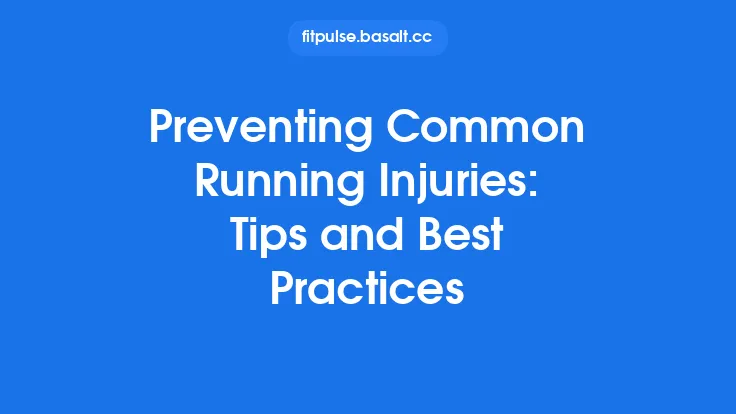Maintaining a professional certification in exercise science is more than a bureaucratic hurdle; it is a continuous commitment to competence, credibility, and career longevity. While the initial certification validates a baseline of knowledge and skill, the recertification process ensures that practitioners stay current with evolving research, emerging technologies, and best‑practice standards. This article outlines evergreen strategies and best practices that help exercise science professionals navigate recertification efficiently, minimize stress, and turn the process into a catalyst for professional growth.
Why Recertification Matters
- Professional Credibility – Employers, clients, and peers view an up‑to‑date credential as evidence of ongoing competence. A lapsed certification can erode trust and limit job opportunities.
- Legal and Ethical Obligations – Many jurisdictions and professional bodies require active certification to practice. Failure to recertify can result in loss of licensure or liability exposure.
- Access to Resources – Certified members often receive exclusive access to research databases, webinars, and networking events that are essential for staying at the cutting edge.
- Career Advancement – Recertified professionals are more competitive for promotions, higher‑pay roles, and specialized positions (e.g., clinical exercise physiologist, elite‑athlete strength coach).
Creating a Recertification Roadmap
A proactive, written plan transforms recertification from a reactive scramble into a structured, manageable project.
| Step | Action | Timeline |
|---|---|---|
| 1. Review Certification Cycle | Confirm the exact renewal period (e.g., 2‑year, 4‑year) and any mandatory components. | Immediately after certification is earned. |
| 2. Identify Required Credits | List the total credit hours needed and any category caps (e.g., a maximum of 20% in “general fitness”). | Within the first month of the cycle. |
| 3. Break Down by Quarter | Allocate a realistic number of credits per quarter, factoring in work and personal commitments. | At the start of each quarter. |
| 4. Choose Delivery Formats | Decide on a mix of live workshops, online modules, research reading, and practical experiences. | Ongoing, based on availability. |
| 5. Set Milestones | Mark key dates for completing specific credit blocks, submitting documentation, and final review. | Quarterly reminders in calendar. |
| 6. Conduct Mid‑Cycle Audit | Review progress halfway through the cycle; adjust the plan if you’re ahead or behind. | At the 50% point of the cycle. |
| 7. Finalize Documentation | Compile certificates, transcripts, and proof of practical hours; verify against the certifying body’s checklist. | 1–2 months before the deadline. |
By visualizing the entire cycle, you avoid the “last‑minute rush” that often leads to missed deadlines or suboptimal learning experiences.
Effective Use of Continuing Education Credits
Continuing education (CE) is the backbone of most recertification models, but the way you acquire credits can dramatically affect both learning outcomes and efficiency.
- Prioritize High‑Impact Topics – Align CE with your career goals (e.g., periodization for strength coaches, metabolic disease for clinical exercise physiologists). This ensures that credits also serve as professional development.
- Blend Theory and Practice – Pair a research‑focused webinar with a hands‑on workshop. Theoretical knowledge solidifies understanding; practical application reinforces skill retention.
- Leverage Employer‑Sponsored Programs – Many gyms, health clubs, and academic institutions subsidize CE. Coordinate with HR to maximize these benefits.
- Seek Multi‑Credit Opportunities – Some conferences offer “bundled” credits (e.g., a 2‑hour lecture plus a 1‑hour lab counts as 3 credits). This reduces administrative overhead.
- Document Learning Outcomes – For each CE activity, write a brief reflection (150–200 words) on how the content will influence your practice. This not only satisfies many certifiers’ reflective requirements but also deepens retention.
Leveraging Professional Memberships and Networks
Professional organizations (e.g., ACSM, NSCA, ISSA) are more than credentialing bodies; they are ecosystems that support recertification.
- Special Interest Groups (SIGs) – Join SIGs that focus on niche areas (e.g., youth strength training, geriatric exercise). SIG meetings often count toward CE and provide targeted networking.
- Mentorship Programs – Pairing with a senior professional can accelerate learning, provide guidance on credit selection, and help troubleshoot documentation issues.
- Peer Review Sessions – Organize quarterly case‑study reviews with colleagues. Presenting a client case and receiving feedback can count as a CE activity in many certification frameworks.
- Volunteer Opportunities – Serving on conference committees, editorial boards, or community outreach programs not only fulfills service credit requirements but also expands your professional footprint.
Documenting and Organizing Your Credentials
A well‑organized documentation system reduces stress during the final submission phase.
- Digital Repository – Create a dedicated folder on a cloud service (e.g., Google Drive, OneDrive) titled “Recertification 202X.” Sub‑folders for “CE Certificates,” “Practical Hours,” “Reflective Statements,” and “Correspondence” keep everything searchable.
- Standardized Naming Convention – Use a consistent file name format: `YYYY-MM-DDProviderCreditType_Description.pdf`. This makes bulk uploads and audits straightforward.
- Backup Strategy – Maintain a secondary backup on an external hard drive or a different cloud platform to guard against data loss.
- Audit Trail – Keep a simple spreadsheet tracking each activity: date, provider, credit hours, category, and file link. Include a column for “Verified by” to note when you or a mentor reviewed the entry.
- Retention Policy – Some certifiers require you to keep records for a specific period after renewal (often 3–5 years). Mark the expiration date in your calendar to ensure long‑term compliance.
Utilizing Technology and Apps for Tracking
Modern tools can automate much of the tracking and reminder process.
- CE Management Platforms – Services like CE Broker, MyCPE, or CertifyMe integrate with many certification bodies, automatically logging credits and sending renewal alerts.
- Calendar Integration – Sync your CE deadlines with Google Calendar or Outlook, setting recurring reminders 30, 14, and 7 days before each milestone.
- Task Management Apps – Use Trello, Asana, or Notion to create a board with columns for “Planned,” “In Progress,” and “Completed” credits. Attach PDFs directly to each card for instant access.
- Mobile Scanners – Apps such as Adobe Scan or CamScanner let you capture paper certificates on the go, converting them to searchable PDFs that can be uploaded directly to your digital repository.
- Learning Management Systems (LMS) – If your employer or professional organization offers an LMS, enroll in courses that automatically feed completion data into your recertification profile.
Integrating Practical Experience and Skill Refreshers
Beyond classroom‑style CE, hands‑on practice is often a required component of recertification.
- Clinical Hours – For exercise physiologists, log a minimum number of supervised patient sessions. Use a standardized log sheet that captures client demographics, intervention type, and outcomes.
- Coaching Clinics – Attend or lead a coaching clinic; many certifiers count the hours you spend delivering instruction as both CE and practical experience.
- Simulation Labs – Participate in high‑fidelity simulation labs (e.g., metabolic testing, biomechanical analysis). These sessions sharpen technical skills and often provide documentation for recertification.
- Self‑Directed Projects – Design a small research or quality‑improvement project (e.g., evaluating a new periodization model with a client cohort). Document methodology, results, and implications; many certifiers accept such projects as evidence of continued competence.
Preparing for Recertification Exams and Assessments
Some certifications require a recertification exam or competency assessment.
- Diagnostic Self‑Assessment – Early in the cycle, take a practice exam to identify knowledge gaps. Focus subsequent CE on those weak areas.
- Study Schedule – Allocate short, consistent study blocks (e.g., 30 minutes daily) rather than marathon sessions. Spaced repetition improves long‑term retention.
- Resource Curation – Use official study guides, peer‑reviewed articles, and reputable question banks. Avoid “quick‑fix” resources that may contain outdated information.
- Mock Exam Conditions – Simulate the testing environment (timed, no notes) at least once before the actual exam to build confidence and stamina.
- Post‑Exam Review – After the exam, review any missed items and seek targeted CE to address those topics, turning the assessment into a learning opportunity.
Staying Informed About Industry Changes
The exercise science field evolves rapidly—new research, technology, and regulatory updates can affect recertification requirements.
- Subscribe to Core Journals – Set up RSS feeds or email alerts for journals such as Medicine & Science in Sports & Exercise, Journal of Strength and Conditioning Research, and Exercise Physiology Review.
- Follow Regulatory Bodies – Monitor updates from the U.S. Department of Health & Human Services, state licensing boards, and international equivalents for any changes in scope of practice.
- Webinar Alerts – Many professional societies announce webinars on emerging topics (e.g., AI‑driven training platforms, tele‑exercise). Register early to secure CE credit.
- Continuing Education Summaries – Some organizations publish annual “CE Highlights” that summarize the most impactful courses; use these as a shortcut to identify high‑value learning.
Balancing Recertification with Career Demands
Recertification should complement, not compete with, your day‑to‑day responsibilities.
- Integrate Learning into Workflows – Use client case reviews as CE opportunities; present findings at staff meetings and claim the session as a credit.
- Micro‑Learning – Leverage short, 5‑minute micro‑learning modules during breaks or commute time. Platforms like Coursera’s “Skill Boosts” or LinkedIn Learning offer bite‑sized content that counts toward CE.
- Time‑Blocking – Reserve a consistent weekly block (e.g., Tuesday 7–9 p.m.) dedicated solely to recertification tasks. Treat it as a non‑negotiable appointment.
- Delegate When Possible – If you manage a team, assign certain CE responsibilities (e.g., organizing a workshop) to junior staff, providing them with growth opportunities while earning your own credit.
Common Pitfalls and How to Avoid Them
| Pitfall | Consequence | Preventive Action |
|---|---|---|
| Procrastination – Waiting until the last month to accumulate credits. | Stress, rushed learning, possible missed deadline. | Adopt the quarterly roadmap and set automated reminders. |
| Over‑reliance on One Credit Source – Using only one provider for all CE. | Limited perspective, potential non‑acceptance if provider changes policies. | Diversify sources; verify each provider’s accreditation status annually. |
| Poor Documentation – Lost certificates or incomplete logs. | Inability to prove credit completion, renewal denial. | Use a digital repository with backup and a tracking spreadsheet. |
| Ignoring Category Caps – Exceeding allowed credits in a single domain (e.g., “general fitness”). | Excess credits may be rejected, requiring additional activities. | Review category limits at the start of the cycle and monitor credit distribution. |
| Neglecting Practical Hours – Focusing solely on classroom CE. | Failure to meet hands‑on requirements, reduced competency. | Schedule at least one practical activity per quarter. |
| Failing to Verify Updates – Not checking for changes in recertification policy. | Credits may become invalid, unexpected fees. | Subscribe to official newsletters and review policy updates annually. |
Resources and Support Systems
- Certification Body Portals – Most certifiers host a member dashboard with renewal checklists, CE catalogs, and document upload tools.
- Professional Coaching Communities – Platforms like the Exercise Science Network (ESN) or the Strength & Conditioning Forum provide peer support and shared resources.
- Continuing Education Aggregators – Websites such as CEUfast, FitnessCEU, and the ACSM Learning Center allow you to search for approved courses by topic, format, and credit value.
- Academic Partnerships – Universities with exercise science programs often offer alumni CE packages at discounted rates.
- Legal Counsel – For those whose practice is regulated, a brief consultation with a health‑law attorney can clarify any licensure implications of recertification lapses.
By treating recertification as a strategic, year‑round professional development plan rather than a once‑year administrative task, exercise science practitioners can safeguard their credentials, enhance their expertise, and position themselves for sustained success in a dynamic field. Implement the roadmap, leverage technology, and engage with your professional community—these evergreen practices will keep you certified, competent, and confident for years to come.



